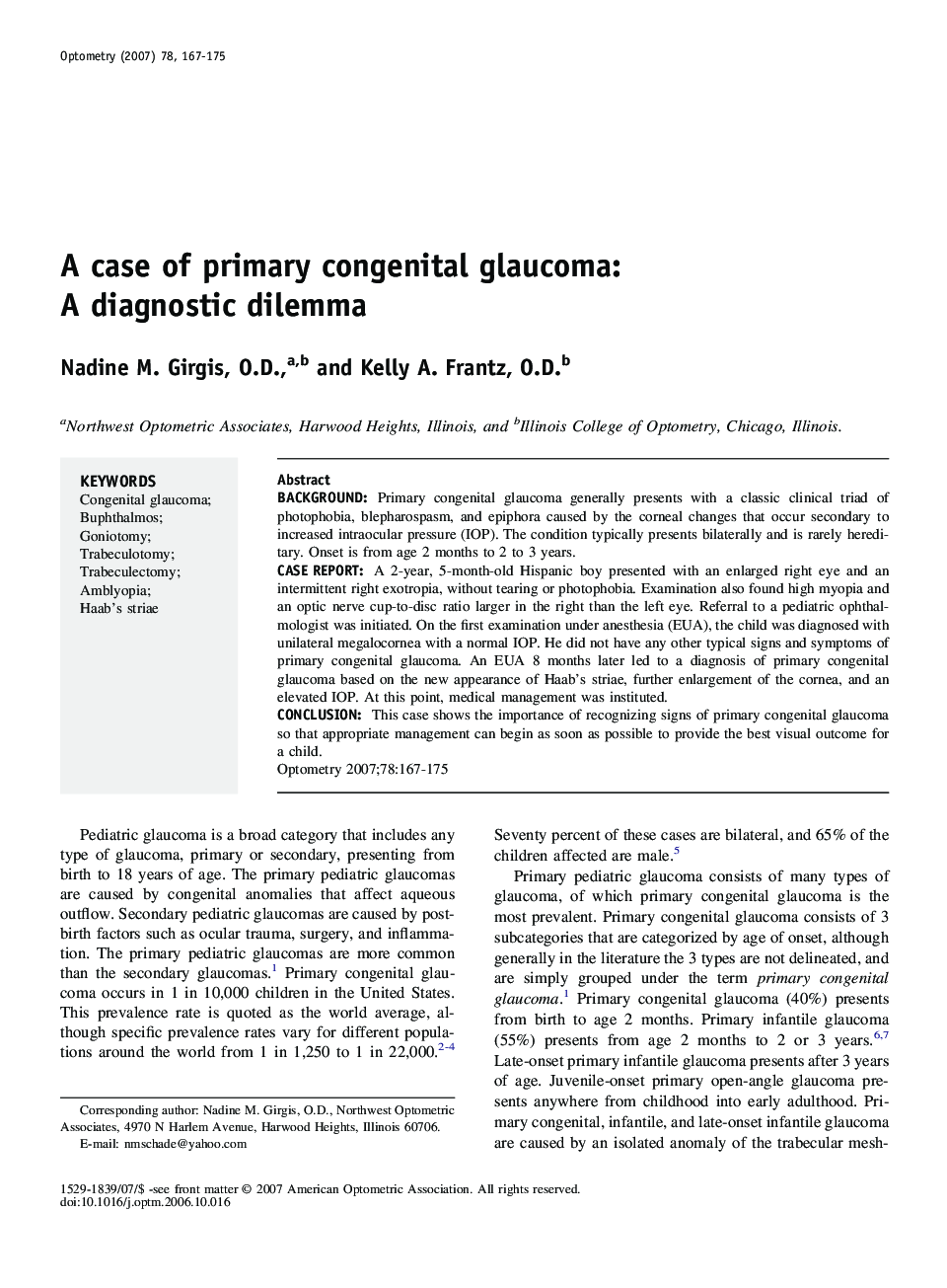| Article ID | Journal | Published Year | Pages | File Type |
|---|---|---|---|---|
| 2699672 | Optometry - Journal of the American Optometric Association | 2007 | 9 Pages |
BackgroundPrimary congenital glaucoma generally presents with a classic clinical triad of photophobia, blepharospasm, and epiphora caused by the corneal changes that occur secondary to increased intraocular pressure (IOP). The condition typically presents bilaterally and is rarely hereditary. Onset is from age 2 months to 2 to 3 years.Case reportA 2-year, 5-month-old Hispanic boy presented with an enlarged right eye and an intermittent right exotropia, without tearing or photophobia. Examination also found high myopia and an optic nerve cup-to-disc ratio larger in the right than the left eye. Referral to a pediatric ophthalmologist was initiated. On the first examination under anesthesia (EUA), the child was diagnosed with unilateral megalocornea with a normal IOP. He did not have any other typical signs and symptoms of primary congenital glaucoma. An EUA 8 months later led to a diagnosis of primary congenital glaucoma based on the new appearance of Haab’s striae, further enlargement of the cornea, and an elevated IOP. At this point, medical management was instituted.ConclusionThis case shows the importance of recognizing signs of primary congenital glaucoma so that appropriate management can begin as soon as possible to provide the best visual outcome for a child.
